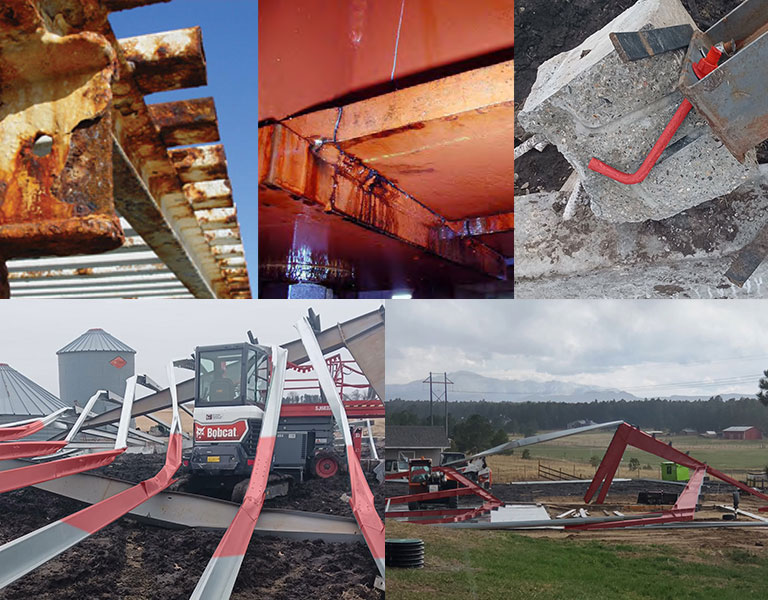
In the world of steel structure design and manufacturing, building a safe and durable structure requires more than just high-quality materials or detailed blueprints. Some critical mistakes — even if they seem minor — can compromise the entire structure over time.
Here are five common mistakes that often lead to steel structure failure and how to avoid them:
to watch video click here
- Improper Installation – Especially Foundation Issues
A strong structure begins with a stable foundation. Even if the steel beams and columns are designed and fabricated perfectly, an uneven or poorly executed foundation can cause the entire structure to shift, settle, or become unstable over time.
Tip:
Always conduct a proper geotechnical survey and ensure the foundation is constructed strictly according to the structural design.
- Overloading – Unaccounted or Unexpected Loads
One of the most frequent causes of failure is subjecting the structure to more weight than it was originally designed to bear. This may include:
- Adding heavy machinery or equipment after construction
- Changing the building’s purpose or layout
- Underestimating natural loads like wind, snow, or seismic activity
Tip:
Always update the structural analysis when usage changes, and never rely on assumptions when it comes to loading.
- Ignoring Critical Structural Elements like Bracing Systems
Some see bracing systems as secondary components, but they are essential to maintaining lateral stability against wind or seismic loads.
Risk:
Omitting or underestimating bracing in the design or during execution can cause the structure to sway or even collapse locally under lateral forces.
Tip:
Never cut corners with structural bracing — consult with experienced structural engineers and always follow code requirements.
- Fatigue Cracks – The Silent Killer
Even perfectly installed structures can fail over time due to repeated stress or vibrations. This leads to tiny cracks in the metal, known as fatigue cracks, which silently grow over time and may result in sudden failure.
Tip:
Perform regular non-destructive testing (NDT) inspections, especially in high-stress zones like joints and welded connections.
- Neglecting Maintenance – and Allowing Rust to Take Over
Steel structures require ongoing maintenance. Corrosion (rust) is one of the most dangerous and underestimated threats. It gradually reduces the effective thickness and strength of steel members.
Tip:
- Use protective coatings or galvanization, especially in coastal or industrial areas
- Clean dirt and moisture-prone zones regularly
- Schedule routine maintenance inspections to catch early signs of corrosion or damage
Conclusion:
Steel structures rarely fail overnight — they give early warning signs. By working with a professional engineering and fabrication team and investing in preventive maintenance, you can ensure the long-term stability and safety of your structure.